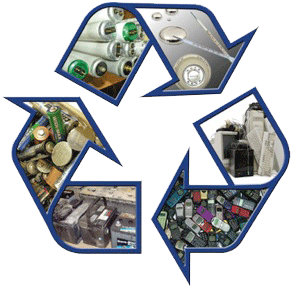 U.S. Environmental Protection Agency (EPA) promotes industrial hazardous waste recycling and has many concessions to do so. The EPA will not however make concessions on what constitutes legitimate recycling versus sham recycling. The 2008 DSW Rule established four “Legitimacy Factors” composed of two “Core Factors” and two “Factors that Must be Considered,” which are codified at 40 CFR 260.43. If your business or facility produces a large amount of recyclable waste, you may have to rent commercial recycling containers to have them collected for further recycling processes.
U.S. Environmental Protection Agency (EPA) promotes industrial hazardous waste recycling and has many concessions to do so. The EPA will not however make concessions on what constitutes legitimate recycling versus sham recycling. The 2008 DSW Rule established four “Legitimacy Factors” composed of two “Core Factors” and two “Factors that Must be Considered,” which are codified at 40 CFR 260.43. If your business or facility produces a large amount of recyclable waste, you may have to rent commercial recycling containers to have them collected for further recycling processes.
Legitimacy Core Factors
A process that does not conform to factor 1 and fact 2 cannot be a legitimate recycling process.
Factor 1—Useful Contribution: Hazardous secondary materials being recycled must provide a useful contribution to the recycling process or to the product of the recycling process. This requirement validates that the recycling process is legitimate because, according to the EPA, “real recycling is not occurring if the hazardous secondary materials being added or recovered do not add anything to the process.”
Factor 2—Valuable Product or Intermediate—The product of the recycling process must be a valuable product or intermediate. In this case, valuable means the product is either sold (economic value) or is used by the recycler or generator as an effective substitute for another commercial product or as an ingredient or intermediate in an industrial process (intrinsic value).
Factors that Must Be Considered
Factors 3 and 4 are not required but must be considered.
Factor 3—Managed as a Valuable Commodity—The generator and the recycler should manage the hazardous secondary material in the same manner as they would other similar valuable materials such as a feedstock. Management should be, at minimum, equal to an analogous raw material or where no analogous material exists, the material should be contained.
Factor 4—Comparison of Toxics in the Product—Hazardous constituent concentrations in products made from the recycling of hazardous secondary materials should be compared to the same in analogous products (those made of raw materials) to ensure they are comparable and not significantly higher, which could indicate sham recycling.
5 Changes Proposed
The following five changes were proposed to the definition of legitimate recycling:
- Expand coverage to include all hazardous secondary materials and hazardous waste recycling under the legitimacy provision, rather than just the 2008 DSW exclusions currently covered.
- Make all four Legitimacy Factors mandatory while providing flexibility necessary to allow a case-by-case petition process to determine if a recycling process that does not meet Factors 3 or 4 can be deemed legitimate.
- Additional text added to Factor 3 expands the management of hazardous secondary materials to include “or in an equally protective manner,” in addition to “a manner consistent with the management of the analogous raw material.”
- Change of wording in Factor 4 from stating that the levels of toxics in products from recycling “must not be significantly elevated” compared to analogous products” to “have to be comparable or lower than” levels found in analogous products.
- Documentation by recyclers of legitimacy determinations based on meeting the four Factors. No specific format is proposed and copies of legitimacy determinations issued by the applicable regulatory agency would be acceptable.
—
Contact Us (859-689-9222) for a Free Consultation!
—
 About Environmental Risk Management
About Environmental Risk Management
1-Source Turnkey Environmental & Safety Services
Since 1989, Environmental Risk Management has been providing responsive, client focused 1-source turnkey solutions for a wide variety of environmental safety challenges. With our experience and extensive network of diverse internal and external resources, our clients trust us to provide quality Environmental & Safety Services for their businesses. Our environmental compliance specialists recognize the need to consult with private industry and the business community and our goal is to ensurer our client’s are complying with complex environmental regulations and minimizing their environmental liabilities.
> Learn More
